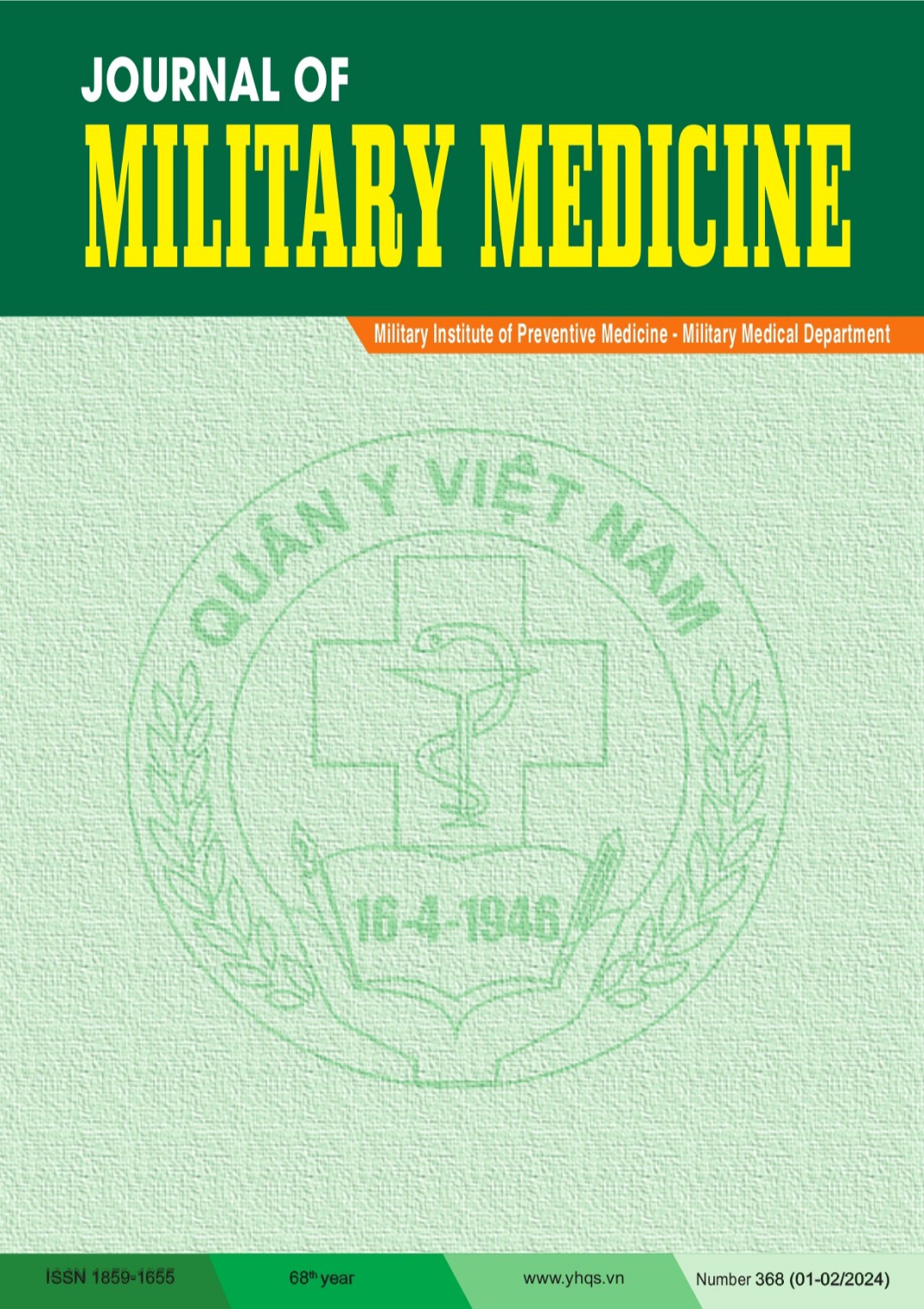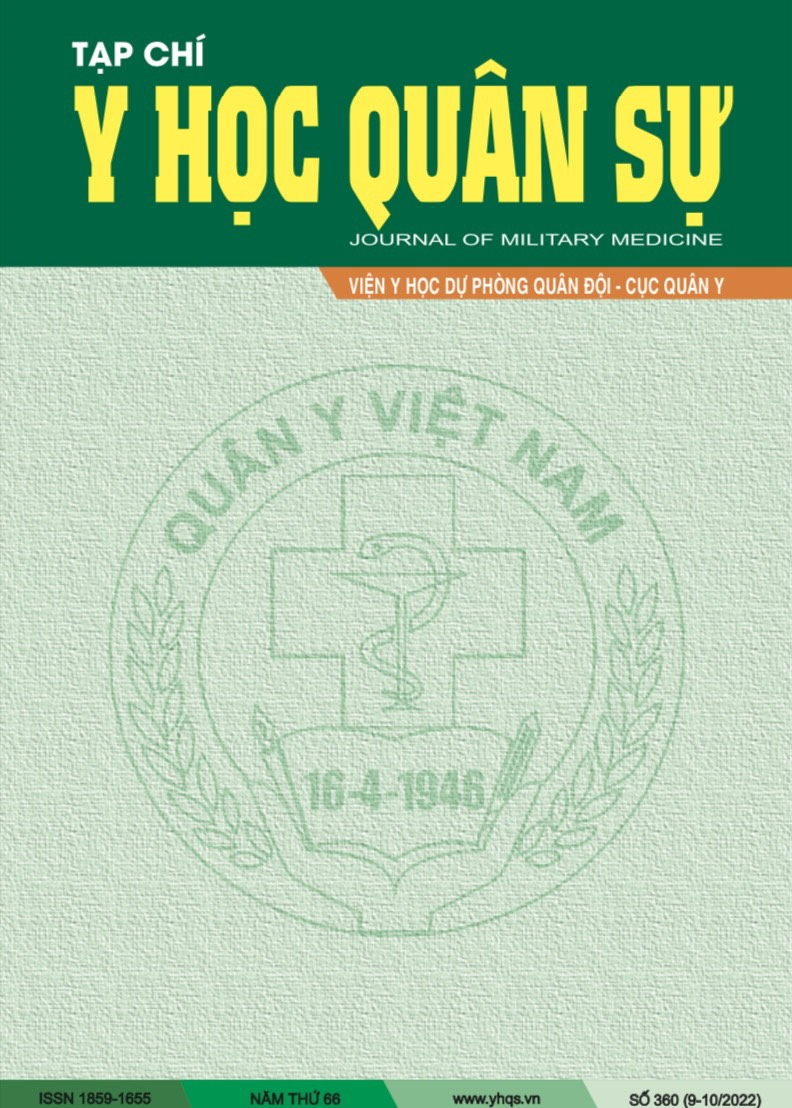EVALUATION OF ACUTE AND SEMI-CHRONIC TOXICITY OF THE REMEDY “BO PHE DINH SUYEN QY” ON EXPERIMENTAL ANIMALS
DOI:
https://doi.org/10.59459/1859-1655/JMM.335Từ khóa:
Bo phe dinh suyen QY, acute toxicity, experimentTóm tắt
Purpose: To evaluate the acute toxicity and semi-chronic toxicity of the remedy “Bo phe dinh suyen QY” on experimental animals.
Subjects and methods: The remedy “Bo phe dinh suyen QY” meeting basic standards was used to evaluate for acute toxicity in Swiss white mice, and for semi-chronic toxicity in Wistar white rats. Acute toxicity was assessed according to the Litchfield-Wilcoxon method. Sub-chronic toxicity was assessed according to the guidance of the Ministry of Health of Vietnam.
Results: The remedy “Bo phe dinh suyen QY” at a dose of 375 g/kg mouse body weight/24 hours did not cause acute toxicity or death of experimental mice. For 28 consecutive days, rats administered “Bo phe dinh suyen QY” at doses of 18.2 g/kg/day and 54.6 g/kg/day without affecting their general condition and hematological indices.
Conclusions: The remedy “Bo phe dinh suyen QY” was safe in the assessment of acute toxicity (on mice) and semi-chronic toxicity (on rats).
Tài liệu tham khảo
Do Quyet, Nguyen Huy Luc (2012), Respiratory diseases (postgraduate), Vietnam Military Medical University, People's Army Publishing House, p. 61-71.
Tran Quoc Bao (2012), Traditional Medical Pathology (postgraduate), Vietnam Military Medical University, People's Army Publishing House, p. 95-112.
Ministry of Health (2015), Guidance on setting up pre-clinical and clinical trials of oriental medicines and medicines from medicinal herbs (Issued together with Circular No. 141/QD-K2DT dated October 27, 2015).
Ministry of Health (2018), Vietnam Pharmacopoeia V, Medical Publishing House, Hanoi.
Kim C.W., Sung J.H., Kwon J.E., Ryu H.Y., Song K.S., Lee J.K., Lee S.R., & Kang S.C. (2019), “Toxicological Evaluation of Saposhnikoviae Radix Water Extract and its Antihyperuricemic Potential”, Toxicological research, 35(4), 371–387.
Li Y., Zhang X., Liang C., Hu J., & Yu Z. (2018), “Safety evaluation of mulberry leaf extract: Acute, subacute toxicity and genotoxicity studies”, Regulatory toxicology and pharmacology: RTP, 95, 220-226.
Xu Y., Ming T.W., Gaun T.K.W., Wang S., & Ye B. (2019), “A comparative assessment of acute oral toxicity and traditional pharmacological activities between extracts of Fritillaria cirrhosae Bulbus and Fritillaria pallidiflora Bulbus”, Journal of ethnopharmacology, 238, 111853.
Yu S.Y., Ouyang H.T., Yang J.Y., Huang X.L., Yang T., Duan J.P., Cheng J.P., Chen Y.X., Yang 0.Y. J., & Qiong P. (2007), “Subchronic toxicity studies of Radix Astragali extract in rats and dogs”, Journal of ethnopharmacology, 110 (2), 352-355.
Zhang W.J., Zhao Z.Y., Chang L.K., Cao Y., Wang S., Kang C.Z., Wang H.Y., Zhou L., Huang L.Q., & Guo L.P. (2021), “Atractylodis Rhizoma: A review of its traditional uses, phytochemistry, pharmacology, toxicology and quality control”, Journal of ethnopharmacology, 266, 113415.
Kim D.G., Lee J., Kim W., An H.J., Lee J.H., Chang J., Kang S.H., Song Y.J., Jeon Y.D., & Jin J.S. (2021), “Assessment of General Toxicity of the Glycyrrhiza New Variety Extract in Rats”, Plants (Basel, Switzerland), 10 (6), 1126.
LIU Jia, LI Qiang, GUO Li, LI Guo-hui, ZHAO Xing-hua, LIU Jing, HE Xin (2017), “Study on Acute Toxicity and Sub-chronic Toxicity of the Extract of Rehmannia glutinosa [J]”, 2017, 44 (11): 3372-3378.
Park J.H., Seo B. I., Cho S.Y., Park K.R., Choi S.H., Han C.K., Song C.H., Park S.J., & Ku S.K. (2013), “Single oral dose toxicity study of prebrewed armeniacae semen in rats”, Toxicological research, 29 (2), 91-98.
Tải xuống
Đã Xuất bản
Cách trích dẫn
Số
Chuyên mục
Chấp nhận đăng 23-02-2024
Ngày xuất bản 28-02-2024



